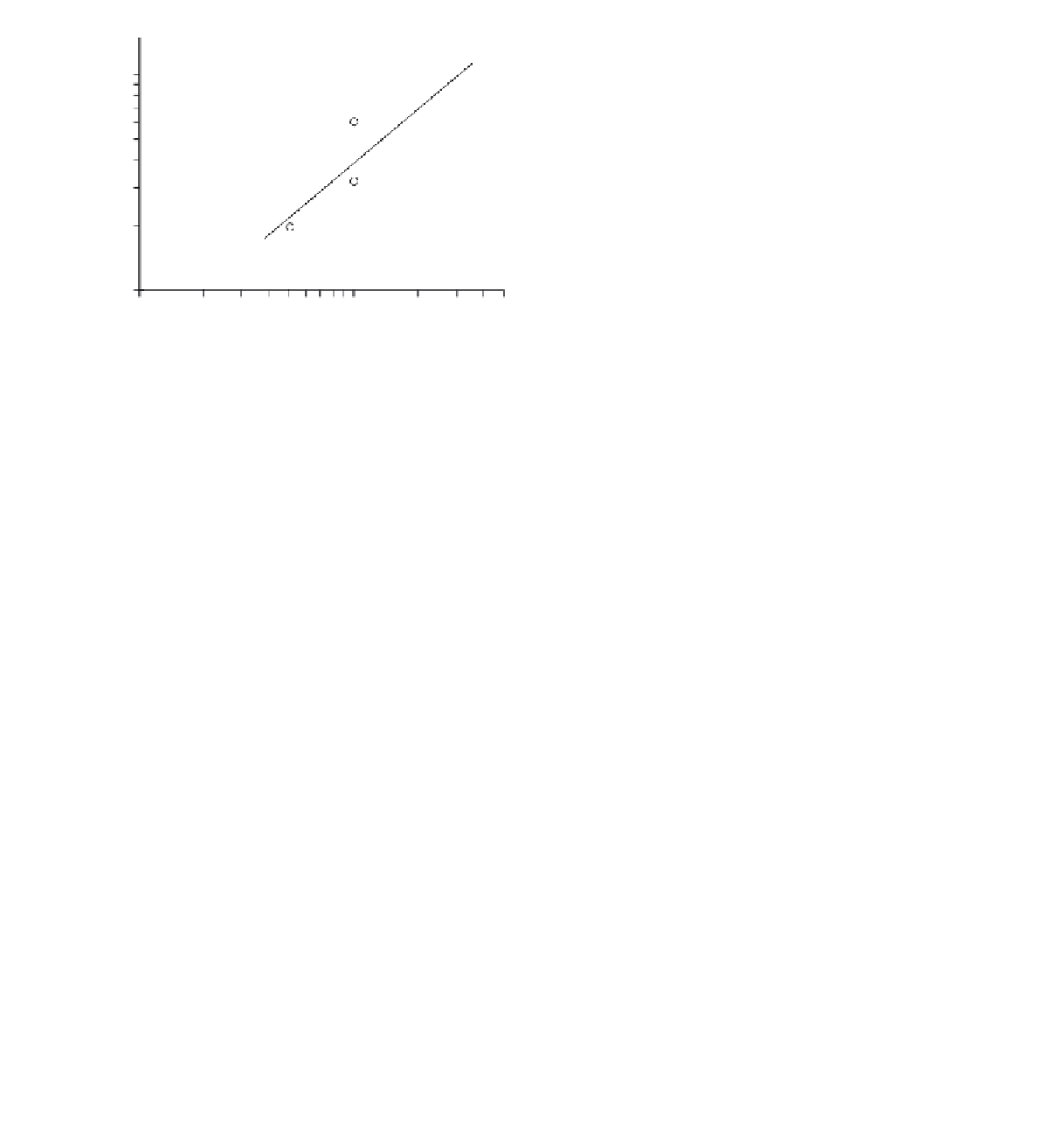Geoscience Reference
In-Depth Information
charge contributions for low- and high-magnitude floods
that alerts the geomorphologist to the complicated down-
stream changes in flow that can be expected in desert
floods. Almost all statistical and mathematical models of
transmission losses (e.g. Lane, Diskin and Renard, 1971;
Walters, 1990; Sharma and Murthy, 1995) have necessar-
ily used channel reaches in which the outflow hydrograph
is unaffected (as best as can be judged) by complications
such as tributary inflow. Interestingly, they give tolerable
first approximations, in some cases over channel lengths
of up to 25 km. However, Knighton and Nanson (1994)
draw attention to the fact that the pattern of behaviour
evident in one reach of a river may not be repeated down-
stream, reinforcing the impression of unpredictability in
ephemeral systems.
Transmission losses have two effects on the flood wave.
They may steepen the bore (Butcher and Thornes, 1978),
though the effect will be highly variable depending upon
the location of the storm in relation to the drainage net
and, therefore, how dry the bed is before being overrun
(Reid and Frostick, 1987). They also ensure that flood
discharge
decreases
downstream in the absence of signif-
icant tributary inflows (Figure 13.8). This is in complete
contrast with perennial streams and has considerable im-
plications for downstream changes in channel geometry
and sediment transport.
1.0
0.5
0.1
0.01
0.1
0.5
Bore height, m
Figure 13.7
Relation between flash-flood bore velocity and
height observed in Nahal Og, Judean Desert, and Nahal Hebron,
Negev Desert, Israel (after Hassan, 1990a).
transmission losses will depend upon the porosity and
depth of the channel fill as well as upon the hydraulic
conductivity of its least permeable layer, in relation to the
length of the flood period (Parissopoulos and Wheater,
1992). The fixed flow-measuring flumes installed in Wal-
nut Gulch in Arizona (Renard and Keppel, 1966) also
indicate that an increase in the wetted perimeter with in-
creasing peak discharge is an important variable in reckon-
ing transmission losses (Figure 13.8). Where flow exceeds
channel capacity and spills on to the floodplain, as in the
peculiar anastomosing channel system of Cooper Creek
of the Lake Eyre basin of Australia, transmission losses
are shown to increase from c. 60 % to c. 90 % over a
channel length of 420 km (Knighton and Nanson, 1994).
Thornes (1977) (Figure 13.9) offers a conceptual model
of the interaction of transmission losses and tributary dis-
13.2.4
Drainage basin size and water discharge
The low annual rainfall of arid and semi-arid areas in-
evitably means that the annual discharge of ephemeral
streams is low compared with perennial counterparts hav-
ing the same size drainage basin. In fact, Wolman and
40
10
Flume 6
Flume 2
Downstream
1
20
Flume 1
0
0.1
0
2
4
6
8
1
10
100
Average peak discharge, m
3
s
-1
Time, h
Figure 13.8
(a) Transmission losses reduce the size of the flood wave on Walnut Gulch by c. 60 % over the 10 km channel length
between flumes 6 and 1. (b) Transmission losses, expressed in cubic metres per second per kilometre of channel, as a function of















